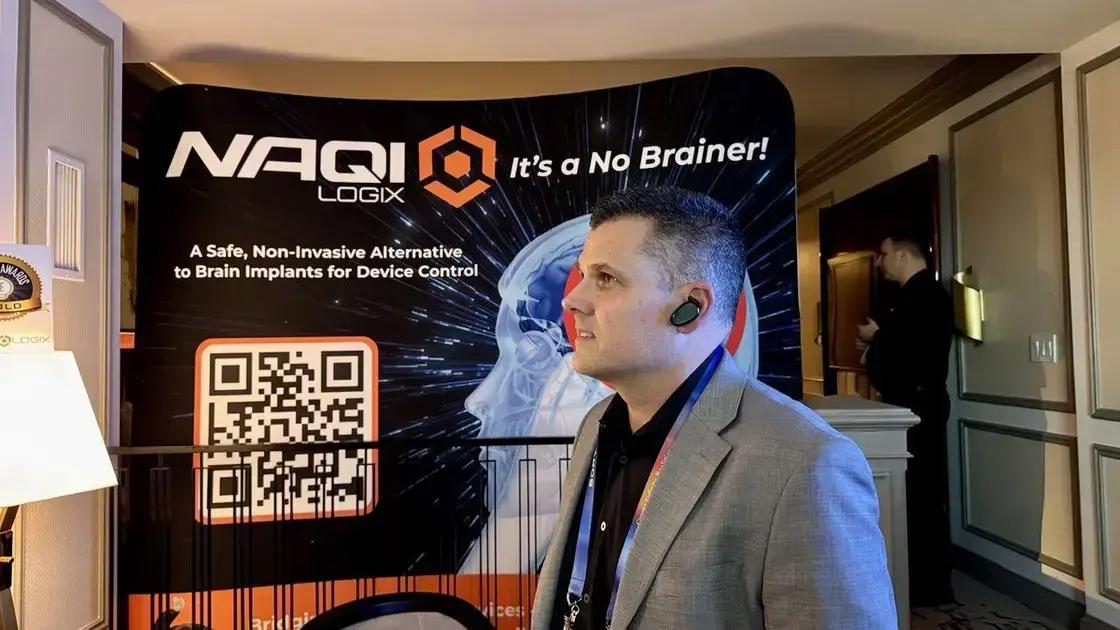I just tested out some mind-controlled earbuds, and let me tell you, it’s a potential game-changer, especially for accessibility. These aren’t your typical earbuds; they use a brain-computer interface to translate thoughts into actions. This tech could open up a world of possibilities.
Next-Gen Earbuds: A Leap Towards Enhanced Accessibility
These earbuds aren’t just about listening to music; they monitor subtle electrical signals in your brain through the ear canal. This is done using electroencephalography (EEG). It’s a non-invasive way to detect brain activity. Imagine controlling your smart home devices, sending texts, or even navigating a wheelchair with just your thoughts. This is the promise of NextMind’s technology.
The earbuds translate these signals into commands for devices. This tech could make everyday tasks easier for people with disabilities. Check out the innovative features of the WeWalk Smart Cane 2, designed to transform mobility for the visually impaired. NextMind envisions a future where this kind of control is seamless and intuitive. They’re looking beyond just accessibility, too, aiming to integrate this tech into various consumer electronics.
The demo I tried showed how I could trigger actions on a screen by focusing my attention. While it wasn’t perfect, the potential was clear. With more refinement, this tech could become incredibly precise. Consider the potential enhancements to Google’s new Pixel Buds, designed to simplify charging. Explore the possibilities further in the article about Google’s Pixel Buds alignment feature.
The current version of these mind-control earbuds requires a separate sensor device. However, NextMind is working to integrate all components into a single earbud unit. This would make it much more user-friendly and practical for daily use. The world of tech is rapidly evolving, and innovative audio products like the Satechi’s new SM3 mechanical keyboard are constantly emerging.
Exploring the Potential of Earbuds and Brain-Computer Interfaces
One of the exciting aspects of brain-computer interfaces is the potential to enhance accessibility features. The hands-free nature of this technology could significantly improve the lives of those with limited mobility. It also opens up new avenues for interacting with technology in general, making it more intuitive and natural. It’s fascinating how technology is evolving to cater to diverse needs. Discover more about the latest advancements in accessibility in the article YouTube Music launches new metrics for artists with monthly audience.
While the technology is still in its early stages, the progress made is remarkable. As the hardware and software continue to improve, we can expect to see even more impressive demonstrations of these earbuds in action. One can imagine future applications extending beyond simple commands to more complex interactions with our digital environments. Speaking of complex interactions, are you curious about Apple’s future plans? Dive into the rumors surrounding iPhone’s Under-Screen Face ID and explore the exciting possibilities.
There’s definitely a cool factor to controlling devices with your mind, but the real value here lies in its potential to improve people’s lives. Imagine someone with quadriplegia controlling a computer or a smart home with these earbuds. That’s where this technology truly shines. While we look forward to the advancements in earbuds technology, let’s not forget the classics. Check out the 18 years since Steve Jobs unveiled the iPhone and Apple TV to reminisce about the tech journey.
The future development of this technology hinges on achieving better accuracy and seamless integration into everyday devices. The more intuitive and reliable these earbuds become, the greater their potential impact will be. Explore the exciting advancements showcased at CES 2025 in the article Discover the incredible gadgets from CES 2025 now available for purchase! It offers a glimpse into the future of consumer electronics, hinting at a world where brain-computer interfaces become as commonplace as smartphones.
This technology underscores the broader trend of integrating sensors into wearable devices. From fitness trackers to smartwatches, we’re increasingly relying on sensors to collect data about our bodies and our environments. It will be interesting to see how brain-computer interfaces fit into this evolving landscape. It is worth noting that other wearable technologies like the Apple Watch are available with student discounts, so keep an eye out for potential Apple student offers.
Via Tom’s Guide


